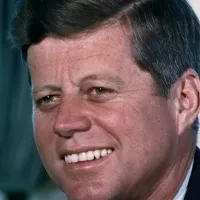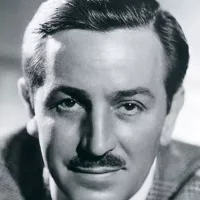Marvel Comics, founded in 1939 as Timely Comics by Martin Goodman and later known as Atlas Comics, transitioned into the Marvel era in 1961 with The Fantastic Four and other superhero titles. These were created by Stan Lee, Jack Kirby, Steve Ditko, and others. Based in New York City, Marvel is now a property of the Walt Disney Company (since 2009) and a subsidiary of Disney Publishing Worldwide (since 2023). The Marvel brand solidified itself as the company's primary brand, and it is known for its superhero comic books.
1933: Goodman's Start with Western Pulp
In 1933, Martin Goodman started his publishing career with a Western pulp magazine.
1939: Timely Publications Established
In 1939, Martin Goodman created Timely Publications, later known as Marvel Comics.
1939: Timely Comics Founded
In 1939, Martin Goodman founded Timely Comics, which would later become Marvel Comics.
1939: Stanley Lieber Hired
In 1939, Martin Goodman hired his wife's 16-year-old cousin, Stanley Lieber (later known as Stan Lee), as a general office assistant.
1939: Marvel Comics #1 Publication
In 1939, Timely's first publication, Marvel Comics #1, introduced the Human Torch and Namor the Sub-Mariner.
March 1941: Captain America Comics #1 Release
In March 1941, Captain America Comics #1 was released, created by Joe Simon and Jack Kirby, and proved to be a hit, selling nearly one million copies.
April 1941: Timely Comics, Inc. formed
Beginning with comics cover-dated April 1941 or Spring 1941, Goodman formed Timely Comics, Inc.
1941: Stan Lee Becomes Interim Editor
In late 1941, when editor Joe Simon left the company, Goodman made Stanley Lieber (Stan Lee) interim editor of the comics line.
May 1944: Marvel Comics Name Used
By May 1944, one of the shell companies publishing Timely Comics was named Marvel Comics, as seen in Marvel Mystery Comics #55.
1946: Marvel Magazine Label
Around 1946, some comics' covers, like All Surprise Comics #12 (Winter 1946–47), were labeled "A Marvel Magazine".
November 1948: Marvel Comic Group Identified
Around November 1948, the company began identifying its comic division as Marvel Comic Group, even though the legal name was still Timely.
November 1951: Atlas News Company Globe Logo Used
In November 1951, Martin Goodman began using the globe logo of his Atlas News Company on comics covers.
1951: Atlas Comics Emerges
By 1951, Timely Comics had generally become known as Atlas Comics.
August 1952: Kable News Distributes Comics
Through August 1952, Kable News continued to distribute Goodman's comics, even as he used the Atlas News Company logo.
1953: Attempt to Revive Superheroes
From late 1953 to mid-1954, Atlas unsuccessfully attempted to revive superheroes, including the Human Torch, the Sub-Mariner, and Captain America.
1954: Attempt to Revive Superheroes
From late 1953 to mid-1954, Atlas unsuccessfully attempted to revive superheroes, including the Human Torch, the Sub-Mariner, and Captain America.
1957: Distribution Switch and Company Rename
In 1957, Goodman switched distributors to the American News Company, which later discontinued its business, and the company was briefly renamed Goodman Comics.
June 1961: Modern Comic Books Under Marvel Comics Brand
In June 1961, the first modern comic books under the Marvel Comics brand, Journey into Mystery #69 and Patsy Walker #95, were released.
August 1961: The Marvel Era Begins
In August 1961, the Marvel era began with the launch of The Fantastic Four and other superhero titles created by Stan Lee, Jack Kirby, Steve Ditko, and others, solidifying the Marvel brand.
1961: Goodman Formally Adopts Marvel Name
In 1961, Martin Goodman formally adopted the Marvel name for his company.
1961: Revolutionizing Superhero Comics
In 1961, Stan Lee revolutionized superhero comics by introducing superheroes designed to appeal to older readers with the release of The Fantastic Four #1 in November 1961, thus ushering in the Marvel Age of Comics.
1962: Communists in Marvel Comics
From 1962 to 1965, communists frequently appeared as antagonists in Marvel Comics, contrasting with their absence in DC Comics' Superman.
1965: Communists in Marvel Comics
From 1962 to 1965, communists frequently appeared as antagonists in Marvel Comics, contrasting with their absence in DC Comics' Superman.
1965: Spider-Man and Hulk as College Heroes
In 1965, Spider-Man and the Hulk were featured in Esquire magazine's list of 28 college campus heroes.
1967: The Avengers Battle the Earth Wrecker Novel
In 1967 Marvel first licensed two prose novels to Bantam Books, who printed The Avengers Battle the Earth Wrecker by Otto Binder.
1968: Captain America: The Great Gold Steal Novel
In 1968 Marvel first licensed two prose novels to Bantam Books, who printed Captain America: The Great Gold Steal by Ted White.
1968: Distribution Arrangement Revised, Company Sold
In 1968, Martin Goodman revised the distribution arrangement with Independent News and sold Marvel Comics and its parent company to the Perfect Film & Chemical Corporation.
1969: Distribution Deal Ends
In 1969, Goodman ended his distribution deal with Independent News by signing with Curtis Circulation Company.
1970: Jack Kirby Leaves Marvel for DC Comics
In 1970, Jack Kirby, the artist co-creator of most of Marvel's signature characters, left Marvel to work for rival DC Comics.
1970: Conan the Barbarian Publication
In 1970, Marvel started publishing Conan the Barbarian, adding to its line of comics with themes like horror, martial arts, sword-and-sorcery, satire, and science fiction.
July 1971: Release of The Amazing Spider-Man #96–98
In July 1971, The Amazing Spider-Man #96–98 was released without the Comics Code seal, due to its storyline about drug abuse, which led to the CCA revising its code.
November 1971: Price and Size Increase
In November 1971, Marvel increased the price and size of its comics from 15 cents for 36 pages to 25 cents for 52 pages.
1971: The Amazing Spider-Man #96–98 got CCA approval
In 1971, The Amazing Spider-Man #96–98 got CCA approval.
1972: Goodman and Lee's Transitions
In 1972, Martin Goodman retired as publisher, replaced by his son Chip, and Stan Lee succeeded him, also becoming Marvel's president for a brief time.
1972: Marvel Pulls Ahead of DC
In 1972, Marvel pulled ahead of rival DC Comics during a time when the price and format of standard newsstand comics were in flux.
1973: Perfect Film Renamed Cadence, Magazine Management Renamed Marvel Comics Group
In 1973, Perfect Film & Chemical was renamed Cadence Industries, and Magazine Management was renamed Marvel Comics Group.
1974: Seaboard Periodicals and Atlas Comics Revived
In 1974, Martin Goodman, now disconnected from Marvel, set up a new company called Seaboard Periodicals, reviving Marvel's old Atlas name for a new Atlas Comics line.
1974: Origins of Marvel Comics Book Release
In 1974, the book "Origins of Marvel Comics" by Stan Lee was published, detailing the creation of a superhero team due to the success of DC's Justice League of America.
1975: Marvelcon '75 and Jack Kirby's return announcement
In 1975, Marvel held its own comic book convention, Marvelcon '75, and promised another for '76. At the 1975 event, Stan Lee announced that Jack Kirby was returning to Marvel after leaving in 1970 to work for DC Comics.
1975: Venturing into Audio
In 1975, Marvel ventured into audio with a radio series based on the Fantastic Four and a concept album for music fans called Spider-Man: Rock Reflections of a Superhero, both narrated by Stan Lee.
October 1976: Creation of Captain Britain for the UK market
In October 1976, Marvel created a superhero, Captain Britain, specifically for the British market. Captain Britain debuted exclusively in the UK and later appeared in American comics.
1977: Star Wars Comics Published
In 1977, Marvel began publishing Star Wars comics, as licensed properties from other companies.
1978: Jim Shooter becomes Marvel's editor-in-chief
In 1978, Jim Shooter became Marvel's editor-in-chief. During his tenure, he addressed procedural issues and oversaw critical and commercial successes such as Uncanny X-Men and Daredevil.
1978: Licensing from 1978
Various publishers took up the licenses from 1978 to 2002.
1982: Syndicated comic strips end except for The Amazing Spider-Man
By 1982, Marvel and the Register and Tribune Syndicate launched several syndicated comic strips: The Amazing Spider-Man, Howard the Duck, Conan the Barbarian, and The Incredible Hulk. None of the strips lasted past 1982, except for The Amazing Spider-Man.
1982: Epic Comics imprint for creator-owned material started
In 1982, Marvel started the Epic Comics imprint for creator-owned material, institutionalizing creator royalties.
1984: Spider-Man Atari Game
In 1984 video games based on Marvel characters go back to the Atari 2600 game, Spider-Man.
1984: Marvel Super Heroes RPG Published
In 1984, TSR published the pen-and-paper role-playing game Marvel Super Heroes.
1986: Launch of the New Universe line
In 1986, Marvel launched the ultimately unsuccessful New Universe line to commemorate the 25th anniversary of the Marvel Comics imprint.
1986: Marvel Entertainment Group sold to New World Entertainment
In 1986, Marvel's parent company, Marvel Entertainment Group, was sold to New World Entertainment.
1987: End of first Star Wars Comics Publication
In 1987, Marvel ceased publishing Star Wars comics, as licensed properties from other companies.
1989: MEG sold to MacAndrews and Forbes
In 1989, New World Entertainment sold Marvel Entertainment Group to MacAndrews and Forbes, owned by Ronald Perelman.
1990: Marvel Universe Cards launched
In 1990, Marvel began selling Marvel Universe Cards with trading card maker SkyBox International. These were collectible trading cards that featured the characters and events of the Marvel Universe.
1991: Perelman takes MEG public
In 1991, Ronald Perelman took Marvel Entertainment Group public.
1992: X-Men: The Animated Series released
In 1992, Marvel released the X-Men: The Animated Series, which aired on Fox Kids.
1992: Seven Marvel artists leave to form Image Comics
In early 1992, seven of Marvel's artists left to form Image Comics in a deal brokered by Malibu Comics' owner Scott Mitchell Rosenberg.
June 1993: Hero Caps Brand Issued
In June 1993, Marvel issued its collectable caps for milk caps game under the Hero Caps brand.
1993: Marvel teamed up with Thomas Nelson to create Christian media genre comics
In 1993, Marvel teamed up with Thomas Nelson to create Christian media genre comics, including a Christian superhero named The Illuminator and adaptions of Christian novels too.
1993: Conan the Barbarian title was canceled
Marvel's Conan the Barbarian title was canceled in 1993 after 275 issues.
November 3, 1994: Marvel purchases Malibu Comics
On November 3, 1994, Marvel purchased Malibu Comics, acquiring computer coloring technology and integrating the Ultraverse line and Genesis Universe into Marvel's multiverse.
1994: Abolishment of editor-in-chief position
In 1994 Marvel briefly abolished the position of editor-in-chief, replacing Tom DeFalco with five group editors-in-chief.
1994: Marvel acquired Heroes World Distribution
In late 1994, Marvel acquired the comic book distributor Heroes World Distribution to use as its own exclusive distributor.
1995: OverPower CCG Release
In 1995 Marvel characters were featured in CCG of their own starting with Fleer's OverPower (1995–1999).
1995: Reinstatement of editor-in-chief position
In 1995 Marvel reinstated the overall editor-in-chief position with Bob Harras.
December 1996: MEG files for Chapter 11 bankruptcy protection
In December 1996, Marvel Entertainment Group filed for Chapter 11 bankruptcy protection.
1996: Marvel titles participate in "Heroes Reborn"
In 1996, Marvel had some of its titles participate in "Heroes Reborn", a crossover that allowed Marvel to relaunch some of its flagship characters and outsource them to the studios of Jim Lee and Rob Liefeld.
1997: Toy Biz bought Marvel Entertainment Group to end the bankruptcy
In 1997, Toy Biz bought Marvel Entertainment Group to end the bankruptcy, forming a new corporation, Marvel Enterprises.
1997: Diamond forges an exclusive deal with Marvel
In early 1997, after Marvel's Heroes World endeavor failed, Diamond forged an exclusive distribution deal with Marvel.
1997: Men in Black film series started
The Men in Black film series, based on a Malibu book, started in 1997.
1997: Licensed films begin
With the various licensed films being released beginning in 1997, various publishers put out film novelizations.
1998: Marvel Super Heroes Adventure Game Released
In 1998 TSR released the Marvel Super Heroes Adventure Game which used a different system, the card-based SAGA system, than their first game.
1998: Launch of the Marvel Knights imprint
In 1998, Marvel launched the imprint Marvel Knights, with better production quality and gritty stories.
1998: Blade film series started
The Blade film series started in 1998.
1999: End of OverPower CCG
In 1999, Fleer's OverPower collectible card game (CCG) featuring Marvel characters, which had started in 1995, ended.
2000: End of Marvel's Conan publications
In 2000, Marvel ended its publications of Conan titles, after publishing additional titles including miniseries until 2000 for a total of 650 issues.
2000: X-Men film series started
The X-Men film series started in 2000.
October 2001: X-Force #116 was the first Marvel Comics title since The Amazing Spider-Man #96-98 to not have the Comics Code Authority (CCA) approval seal
In October 2001, X-Force #116 X-Force #119 was the first Marvel Comics title since The Amazing Spider-Man #96–98 in 1971 to not have the Comics Code Authority (CCA) approval seal, due to the violence depicted in the issue.
2001: 2001: A Space Odyssey Comic
Marvel published a comic book series based on the science fiction movie 2001: A Space Odyssey in 2001.
2002: Spider-Man film series started
The Spider-Man film series started in 2002.
2002: Licensing to 2002
Various publishers took up the licenses from 1978 to 2002.
2003: Marvel Universe Roleplaying Game Published
In 2003 Marvel Publishing published its own role-playing game, the Marvel Universe Roleplaying Game, that used a diceless stone pool system.
2003: Marvel Press Formation
In 2003, following publication of the prose young adult novel Mary Jane, starring Mary Jane Watson from the Spider-Man mythos, Marvel announced the formation of the publishing imprint Marvel Press.
2005: Marvel licensing with Pocket Books
Marvel moved back to licensing with Pocket Books from 2005 to 2008.
November 1, 2006: "She's a Marvel" episode of Guiding Light aired
On November 1, 2006, the CBS soap opera Guiding Light featured an episode titled "She's a Marvel", with a character becoming a superheroine. A backup feature continued the story in Marvel titles.
December 2007: Del Rey Manga to publish original Marvel manga books
At the December 2007 New York Anime Fest, Marvel announced that Del Rey Manga would publish two original English language Marvel manga books featuring the X-Men and Wolverine to hit the stands in spring 2009.
2008: Marvel and DC market share
As of 2008, Marvel and its major competitor DC Comics shared over 80% of the American comic-book market.
2008: Market Share
In 2008, Marvel held a 40.81% share of the comics market, compared to its competitor DC Comics' 29.94%.
2008: Marvel licensing with Pocket Books
Marvel moved back to licensing with Pocket Books from 2005 to 2008.
August 31, 2009: The Walt Disney Company announced to acquire Marvel Entertainment
On August 31, 2009, The Walt Disney Company announced it would acquire Marvel Entertainment for approximately $4 billion.
2009: Marvel Comics closes its Open Submissions Policy
In 2009, Marvel Comics closed its Open Submissions Policy, citing a lack of professional work produced.
2009: Geoff Boucher's Reflection
In 2009, writer Geoff Boucher reflected on the appeal of Marvel's older, college-aged readers.
2009: Del Rey Manga publishes X-Men and Wolverine manga books
In spring 2009 Del Rey Manga published two original English language Marvel manga books featuring the X-Men and Wolverine .
2009: Disney Buys Marvel
Years after Disney purchased Marvel in late 2009, Walt Disney Parks and Resorts plans on creating original Marvel attractions at their theme parks, with Hong Kong Disneyland becoming the first Disney theme park to feature a Marvel attraction.
December 31, 2009: Disney Acquires Marvel
On December 31, 2009, Marvel Comics became a property of The Walt Disney Company.
September 2010: Marvel switches its bookstore distribution company
As of September 2010, Marvel switched its bookstore distribution company from Diamond Book Distributors to Hachette Distribution Services.
October 2010: Marvel moved its office to the Sports Illustrated Building
In October 2010, Marvel moved its office to the Sports Illustrated Building.
March 2011: Marvel relaunched the CrossGen imprint
In March 2011, Marvel relaunched the CrossGen imprint, owned by Disney Publishing Worldwide.
August 2011: Margaret Weis Productions announced role-playing game
In August 2011 Margaret Weis Productions announced it was developing a tabletop role-playing game based on the Marvel universe, set for release in February 2012 using its house Cortex Plus RPG system.
2011: Marvel Press Relaunch
In 2011, Marvel and Disney Books Group relaunched Marvel Press with the Marvel Origin Storybooks line.
February 2012: Release of tabletop role-playing game
In February 2012 using its house Cortex Plus RPG system Margaret Weis Productions releases a tabletop role-playing game based on the Marvel universe.
March 2012: Marvel announced its Marvel ReEvolution initiative
Also in March 2012, Marvel announced its Marvel ReEvolution initiative that included Infinite Comics, Marvel AR, and Marvel NOW!.
March 2012: Marvel discontinues its Marvel Adventures imprint
In March 2012, Marvel discontinued its Marvel Adventures imprint and replaced them with a line of two titles connected to the Marvel Universe TV block.
April 2013: Marvel and other Disney conglomerate components began announcing joint projects
In April 2013, Marvel and other Disney conglomerate components began announcing joint projects.
October 2013: Disney Kingdoms Imprint Announced
In October 2013 Marvel Worldwide with Disney announced that in January 2014 it would release its first comic book title under their joint Disney Kingdoms imprint Seekers of the Weird, a five-issue miniseries inspired by a never built Disneyland attraction Museum of the Weird.
October 2013: Marvel announced that in January 2014 it would release its first title under their joint "Disney Kingdoms" imprint "Seekers of the Weird", a five-issue miniseries
In October 2013 Marvel announced that in January 2014 it would release its first title under their joint "Disney Kingdoms" imprint "Seekers of the Weird", a five-issue miniseries.
2013: Market Share
In 2013, Marvel held a 33.50% share of the comics market, compared to its competitor DC Comics' 30.33%.
January 3, 2014: Lucasfilm announced that as of 2015, Star Wars comics would once again be published by Marvel
On January 3, 2014, fellow Disney subsidiary Lucasfilm announced that as of 2015, Star Wars comics would once again be published by Marvel.
January 2014: Release of "Seekers of the Weird"
In January 2014 Marvel released the "Seekers of the Weird" title under the Disney Kingdoms imprint.
January 2014: Seekers of the Weird Release
In January 2014, Marvel released Seekers of the Weird, its first comic book title under the joint Disney Kingdoms imprint, a five-issue miniseries inspired by a never built Disneyland attraction Museum of the Weird.
2014: Disney Infinity 2.0: Marvel Super Heroes Released
In 2014, Disney Infinity 2.0: Marvel Super Heroes was released that brought Marvel characters to the existing Disney sandbox video game.
2014: Marvel Disk Wars and Bachicombat Release
In 2014, the Marvel Disk Wars: The Avengers Japanese TV series was launched together with a collectible game called Bachicombat, a game similar to the milk caps game, by Bandai.
September 2015: Highest-Grossing Franchise
As of the start of September 2015, films based on Marvel's properties represent the highest-grossing U.S. franchise, having grossed over $7.7 billion as part of a worldwide gross of over $18 billion.
September 2015: Relaunch of the Marvel universe with All-New, All-Different Marvel
In September 2015, following the events of "Secret Wars", a relaunched Marvel universe began, called the All-New, All-Different Marvel.
2015: Star Wars comics would once again be published by Marvel
In 2015 Star Wars comics would once again be published by Marvel.
2015: Star Wars Comics Publication Resumed
Since 2015, Marvel has resumed publishing Star Wars comics, as licensed properties from other companies.
2017: Market Share
In 2017, Marvel held a 38.30% share of the comics market, compared to its competitor DC Comics' 33.93%.
2017: Marvel Legacy Relaunch and Controversy
In 2017, Marvel launched its 'Marvel Legacy' relaunch with lenticular variant covers, requiring comic book stores to increase their orders. This led to complaints and a boycott by some stores. Despite film releases like Guardians of the Galaxy Vol. 2, Logan, Thor: Ragnarok, and Spider-Man: Homecoming, those characters' titles didn't reach top sales, and the Guardians of the Galaxy comic was canceled.
January 12, 2018: Conan Returns to Marvel
On January 12, 2018, Conan Properties International announced that Conan would return to Marvel in early 2019.
March 1, 2019: Marvel Partners with Serial Box
On March 1, 2019, Serial Box, a digital book platform, announced a partnership with Marvel to publish new and original stories related to Marvel franchises.
2019: Conan's Return
In early 2019, Conan returned to Marvel.
May 2020: Production Halt Due to COVID-19 Pandemic
In May 2020, amid the COVID-19 pandemic, Marvel and Diamond Comic Distributors halted the production and release of new comic books.
March 25, 2021: Distribution Shift Announced
On March 25, 2021, Marvel Comics announced plans to shift direct market distribution for monthly comics and graphic novels from Diamond Comic Distributors to Penguin Random House.
October 1, 2021: Distribution Shift Implementation
On October 1, 2021, Marvel Comics began shifting their direct market distribution for monthly comics and graphic novels from Diamond Comic Distributors to Penguin Random House.
March 2023: Marvel becomes a subsidiary of Disney Publishing Worldwide
In March 2023, Marvel became a subsidiary of Disney Publishing Worldwide.
March 29, 2023: Marvel Comics Transferred to Disney Publishing Worldwide
On March 29, 2023, Marvel Comics was transferred to Disney Publishing Worldwide as part of a corporate restructuring to fold Marvel Entertainment into The Walt Disney Company.
June 2024: New Logo Unveiled
In June 2024, Marvel unveiled a new logo for Marvel Comics, designed for "corporate" use and social media, similar to the logos for Marvel Studios and Marvel Studios Animation.
2024: MCU Grosses Over $32 Billion
As of 2024, the Marvel Cinematic Universe (MCU) has grossed over $32 billion.
Mentioned in this timeline

Stan Lee was a pivotal figure in the comic book...

John F Kennedy JFK was the th U S President...

Walter Elias Disney was a highly influential American animator film...

Bob Dylan is a highly influential American singer-songwriter renowned as...
CBS Broadcasting Inc CBS is a prominent American commercial broadcast...
Sports Illustrated SI is an American sports magazine launched in...
Trending

Drew Brees is a former American football quarterback playing seasons in the NFL primarily with the New Orleans Saints He...

7 months ago Logan Paul and Nina Agdal Wedding Fan Invite, WWE Success Fuels Criticism

9 months ago Will Arnett sells Beverly Hills mansion for $20.2 million to Paris Hilton's relative.
7 months ago Savannah Guthrie and Craig Melvin Temporarily Replaced on Today Show: Here's Why

7 months ago Harrison Ford and Gene Simmons to be honored by Operation Smile for charity.

4 months ago Celebrating Chris Hemsworth's Birthday: Iconic Roles from Thor to Extraction and Beyond
Popular

Candace Owens is an American conservative political commentator and author...

Tucker Carlson is an American conservative political commentator known for...

XXXTentacion born Jahseh Dwayne Ricardo Onfroy was a controversial yet...

Ilhan Omar is an American politician currently serving as the...

Kashyap Pramod Patel is an American lawyer who became the...

Bill Gates an American businessman and philanthropist revolutionized personal computing...


